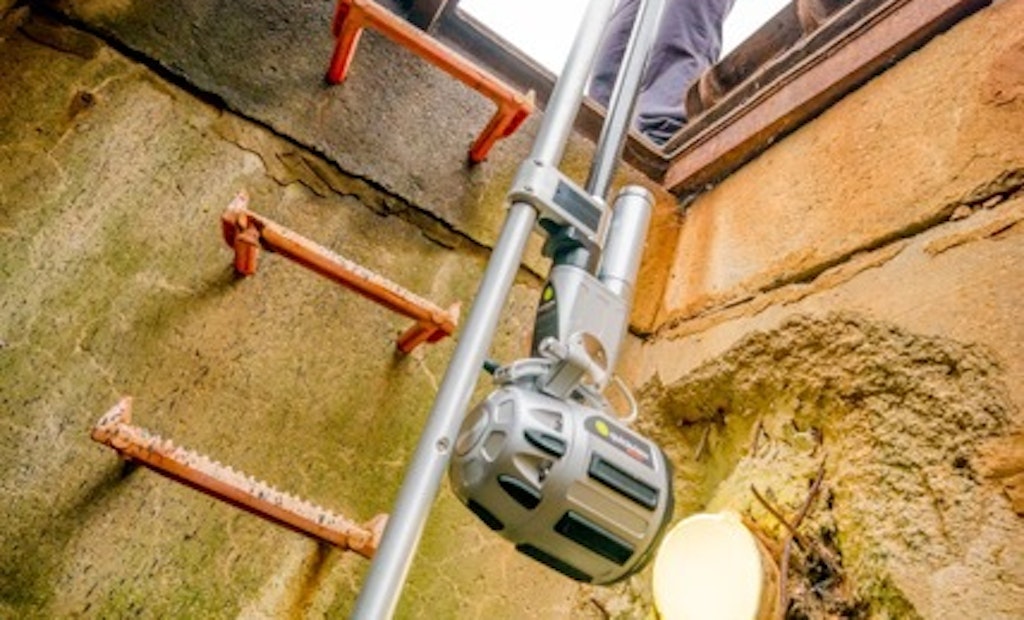Interested in Cleaning?
Get Cleaning articles, news and videos right in your inbox! Sign up now.
Cleaning + Get AlertsIn drought-stricken cities, water conservation means jetting smarter. With numerous states facing their driest spells in history, many are being forced to find new ways to conserve water. Sewer cleaning is a municipal activity that consumes tremendous quantities of freshwater, and yet many municipalities lack a plan to clean smarter in the midst of dwindling water supplies.
According to research, up to 35 percent of sewer lines are jetted unnecessarily as part of regularly scheduled cleaning and maintenance. Most cleaning crews have no way to determine in advance whether a pipe actually needs cleaning. And even when cleaning is warranted, choosing the right nozzle is seldom more than a guessing game.
While the technology to visually assess pipe conditions exists, the savings in time and money are easy to ignore when budgets and workload are already established. But now, scarce water supply is changing the equation in many cities. Municipal supervisors are compelled to pre-screen sewer pipes in order to identify which ones warrant jetting, and to assess what tools are needed to clean the pipes most effectively.
Double trouble
Typically sewers are cleaned blindly. Without knowing what’s in a pipe, a jetter operator runs a nozzle up and down the pipe until the effluent in the manhole shows no more debris. This is inefficient in two ways:
- Even when a pipe needs cleaning, not knowing the condition of the pipe makes selecting the proper nozzle a guessing game. Improper nozzle selection often results in multiple cleaning passes. Water consumption quickly multiplies with each pass — as does the need to refill the jetter truck with water. An informal survey of operators reveals this inefficiency accounts for 22 to 31 percent of total time spent jetting. As Ken Wysocky puts it, “without the correct nozzles, a water jetter is like a Ferrari without wheels — all revved up but incapable of delivering peak performance” (Cleaner 2015).
- For pipes that are already clean, thousands of gallons of water can be used just to determine jetting wasn’t necessary. A high-pressure jetter consumes up to 80 gpm, depending on water pressure and pipe size and condition. Jetting a 300-foot segment of 8-inch pipe can take up to 20 minutes. This means a jetter crew can consume as much as 1,600 gallons of water before realizing jetting wasn't even necessary.
Get the picture
The cost of jetting blind can be measured in dollars, hours and gallons of water. And while traditional inspection methods like CCTV are too slow and expensive to offset those costs, visual assessment technologies such as zoom cameras can help a cleaning crew understand pipe condition in a fraction of the time and cost — without the use of additional water.
Zoom cameras offer a quick, inexpensive way to determine which pipes need to be cleaned and how to clean them. A zoom camera uses focused illumination and high-powered zoom optics to view an entire pipe from an adjoining manhole. An operator simply lowers the camera into the manhole, and then zooms the full length of the pipe to assess condition. The visual assessment allows the operator to determine whether the pipe needs to be cleaned and what nozzle to use.
If the zoom assessment shows no grease, roots, debris or sludge, the line needs no jetting and the crew can move to the next manhole. Otherwise, the crew can select the best nozzle for the conditions found, with the assurance that an appropriate nozzle will clean the line in the shortest time, with minimal operating cost and water.
In the world of sewer jetting, knowing what you are up against has many benefits. It allows municipalities to accomplish routine maintenance cleaning more effectively and efficiently. It allows jetter operators to use the right tools for the job. Most important, it saves municipalities from wasting time, money and particularly water.
This post is an excerpt from a white paper published by Envirosight. To read the unabridged version, visit Clean Sewers With Half the Water.






